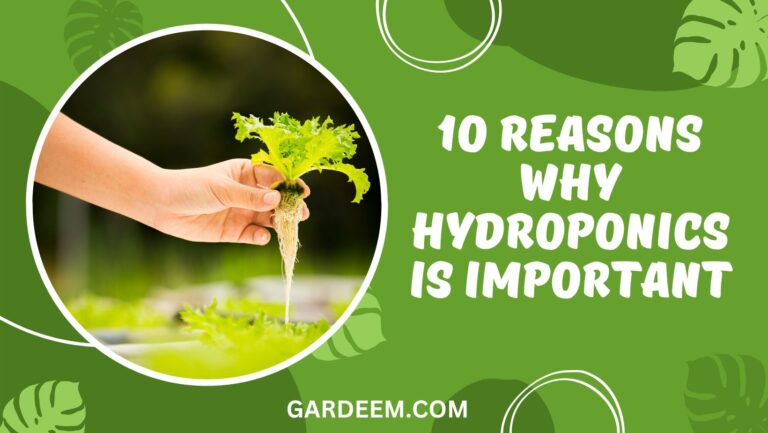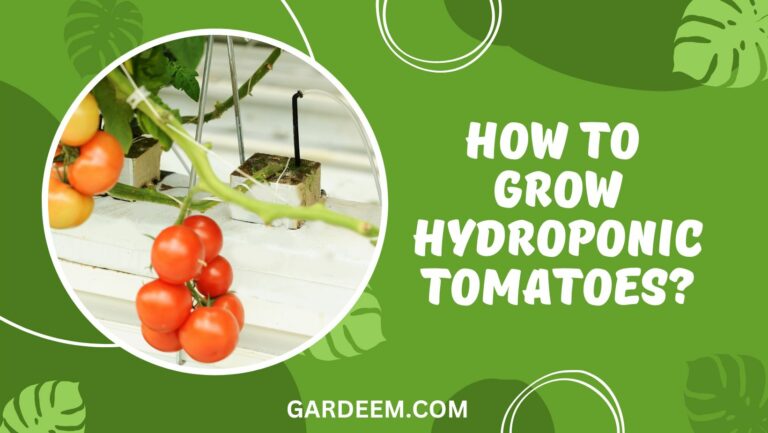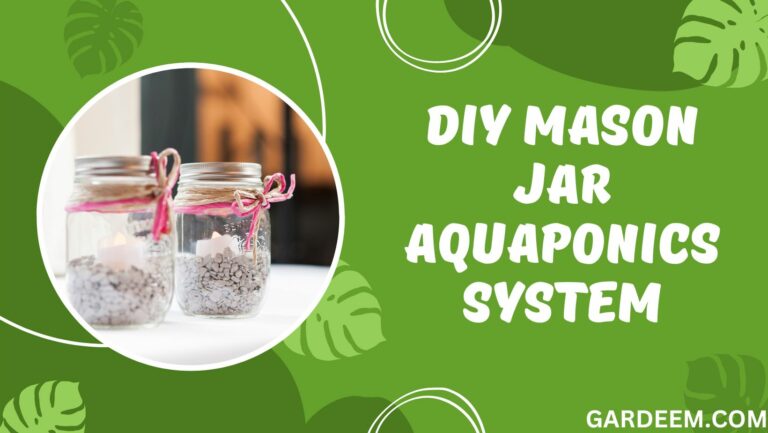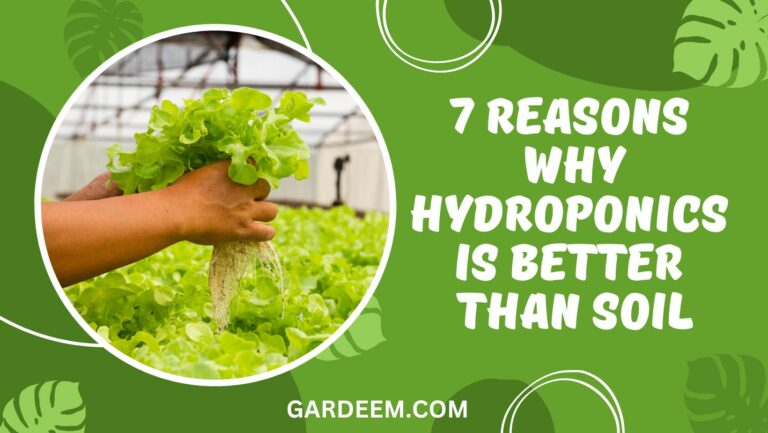
I was browsing Reddit recently, and an interesting question was posted there: Is hydroponics without plastic possible?
So today, that’s what we’re going to be looking at – is hydroponics without plastic possible then we’ll give you a few alternatives.
Is Hydroponics Without Plastic Possible?
Let’s get straight to the point: creating a fully working hydroponics system without plastic usage is possible. If you’ve read our previous post on the history of hydroponics, you’ll know that both hydroponics and aquaponics pre-date the invention of plastic by a thousand years!
While some of the modern active hydroponic systems require some plastic (pumps typically, hose lines or fittings), a couple of the passive systems can be built without plastic.
What Are The Options?
As proof of concept, the most straightforward setup would be a mason jar aquaponics system. For this to work required zero plastic, just recyclable glass.
The other option to consider would be something like the wick system, which is a passive system hydroponic system that doesn’t require a pump, air stones or PVC tubing to get it up and running.
Bamboo As A Possible Solution
One possible alternative to plastic is to use bamboo.
Inspired by bamboo scaffolding used to build throughout Asia, Amaury Gallon created a vertical garden entirely made out of bamboo.
The plants are irrigated several times a day, with each bamboo cane sealed with gravel and a layer of hydrophilic felt. Excess water is collected in containers at the base of the structure, and fish within the base create nutrients for the plants.
So far, the garden has successfully grown zucchini, melon, squash, pickle, tomato, and strawberry, as well as lemon balm, mint, chives and basil.
Downsides of Bamboo
While this might sound like an ideal solution, it does come with several downsides.
The main issue is that when using high-nutrient water with biodegradable materials, the material degrades at a much higher rate means you’ll need to constantly keep an eye on it to make sure holes don’t suddenly appear.
While there are undoubtedly other options, like the metals used in your household pipes, the big downside here is that they come at a significant cost.
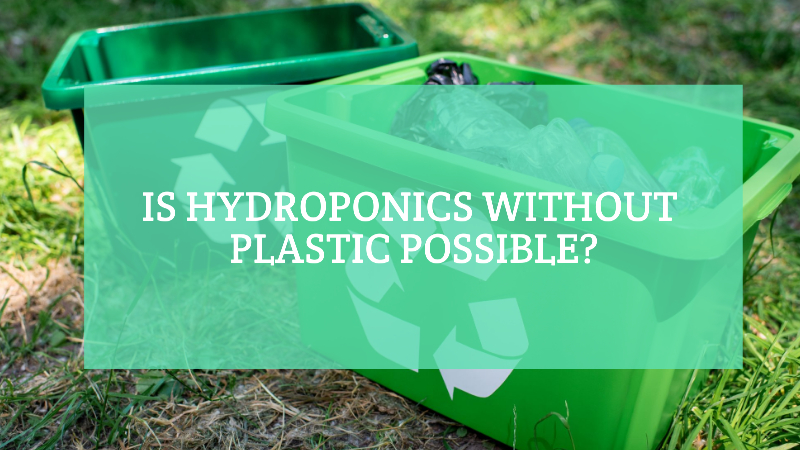
Plastic-Free Alternatives
While plastic is widely used in hydroponics, there are alternatives that can reduce or eliminate plastic usage in certain aspects of hydroponic systems. Here are some plastic-free alternatives that can be considered:
- Grow Medium: Instead of using plastic-based grow media like rockwool or perlite, organic alternatives such as coconut coir, peat moss, or even compost can be used. These alternatives provide support and moisture retention for the plants.
- Containers: Plastic containers can be replaced with biodegradable or compostable materials like fiber pots or paper pots. These containers offer a plastic-free option for starting seedlings or growing plants.
- Drip Irrigation: Plastic tubing in drip irrigation systems can be substituted with alternatives like rubber hoses or biodegradable irrigation lines made from materials such as bamboo or hemp.
- Support Structures: Plastic trellises or stakes can be replaced with bamboo poles, wooden stakes, or metal structures to provide support for the plants.
Challenges and Considerations
While it is possible to reduce plastic usage in certain aspects of hydroponics, completely eliminating plastic from hydroponic systems poses some challenges and considerations:
- Durability and Water Resistance: Plastic materials are chosen in hydroponics for their durability and resistance to water and nutrient solutions. Finding alternatives that offer similar properties can be challenging, as other materials may not withstand the continuous exposure to moisture and nutrient-rich environments.
- System Efficiency and Functionality: Hydroponic systems are designed to deliver water, nutrients, and oxygen efficiently to the plant roots. Replacing plastic components with alternative materials may impact the system’s efficiency, functionality, and long-term performance.
- Cost and Availability: Plastic materials used in hydroponics are often readily available and cost-effective. Identifying and sourcing suitable alternatives may involve higher costs or limited availability, especially for large-scale commercial operations.
- Maintenance and Sterilization: Plastic components in hydroponic systems can be easily cleaned, sterilized, and reused. Alternative materials may require additional maintenance and care to ensure cleanliness and prevent the buildup of pathogens or contaminants.
Moving Towards Sustainability
While completely eliminating plastic from hydroponics may pose challenges, there are steps that can be taken to reduce plastic usage and move towards a more sustainable approach:
- Recycling and Reusing: Implementing recycling and reusing practices can help reduce plastic waste in hydroponic systems. Plastic components that are still in good condition can be cleaned and reused for future crops.
- Choosing Environmentally Friendly Plastics: Consider using bio-based or biodegradable plastics made from renewable sources as an alternative to conventional plastics. These options can offer improved environmental sustainability.
- Optimizing System Design: Design hydroponic systems that minimize the use of plastic components where possible. Explore alternative materials and innovative designs that prioritize sustainability without compromising functionality.
- Education and Awareness: Promote awareness and education about the environmental impact of plastic waste in hydroponics. Encourage growers to explore and adopt plastic-free alternatives wherever feasible.
Conclusion
While completely eliminating plastic from hydroponics may present challenges, reducing plastic usage and exploring plastic-free alternatives is an important step towards a more sustainable approach. By considering alternatives for grow media, containers, irrigation lines, and support structures, hydroponic systems can reduce their environmental footprint. Emphasizing recycling, reusing, and responsible disposal practices can further contribute to minimizing plastic waste. The ultimate goal should be to find a balance between functionality, efficiency, and sustainability in hydroponic systems.
The Bottom Line
So there you have it; while it’s certainly possible to build your system with natural parts, which technically makes hydroponics without plastic possible if you’re planning on creating an active hydroponic system, then you’ll probably need to use some plastic.

Hi, I’m Miles, the lead team member behind Gardeem.com. Besides being a passionate grower and writer, I’m a husband, father and grandfather to three! I started Gardeem in 2017 to provide simple and reliable gardening advice to everyone, regardless of their ability levels.


